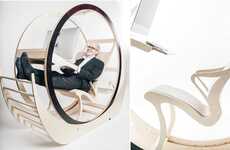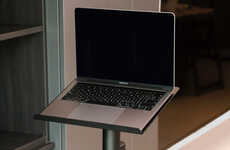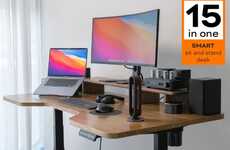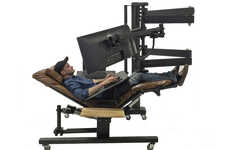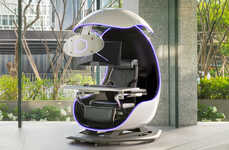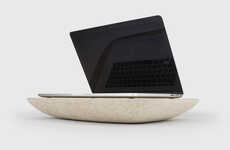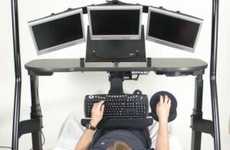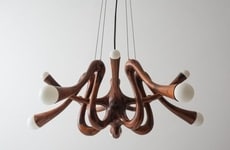
Type From Bed and Be More Lazy
Jeremy Gutsche — January 22, 2007 — Art & Design
References: officeorganix & blog.scifi
Looking for an innovative way to be more lazy? The Ergopod 500 lets you surf the net from your bed. It even has support for multiple monitors, in case you are too lazy to press alt-tab.
Implications - The Ergopod 500 is not only good for surfing the net when you are laying down but also works if you would rather stand up. It rotates for your personal needs and will always be accessible no matter what your position of preference may be. The makers of the inventive product claim that it is a great tool for those who have special needs and have to spend a lot of time in their beds or wheelchairs.
Implications - The Ergopod 500 is not only good for surfing the net when you are laying down but also works if you would rather stand up. It rotates for your personal needs and will always be accessible no matter what your position of preference may be. The makers of the inventive product claim that it is a great tool for those who have special needs and have to spend a lot of time in their beds or wheelchairs.
Trend Themes
1. Lazy Tech - The Ergopod 500 is an example of the growing trend towards technology that enables and encourages laziness, such as hands-free, voice-activated or remote-controlled devices.
2. Adaptive Technology - The Ergopod 500 showcases the potential of adaptive technology in addressing the special needs of people with disabilities or mobility issues. Innovation opportunities lie in developing devices that cater to these groups, from easy-to-use remote controls to adjustable furniture and tools.
3. Personalized Workspaces - The Ergopod 500 highlights the trend towards personalized workspaces that cater to individual preferences and needs, from standing desks to ergonomic chairs and even reclining workstations. This opens up opportunities for businesses to provide more flexible and customizable settings for their workers.
Industry Implications
1. Furniture - Furniture makers can tap into the trend towards personalized and adaptive workspaces, from adjustable desks and chairs to innovative designs that encourage physical activity and better posture.
2. Technology - Tech companies can explore the potential of hands-free and voice-activated devices, remote-controlled gadgets, and other innovations that encourage comfort and convenience, especially in the age of remote work and digital lifestyles.
3. Healthcare - Healthcare providers can benefit from the demand for adaptive and assistive technologies that address the needs of people with disabilities or chronic conditions, from adjustable hospital beds to remote monitoring devices and virtual consultations.
2.7
Score
Popularity
Activity
Freshness


